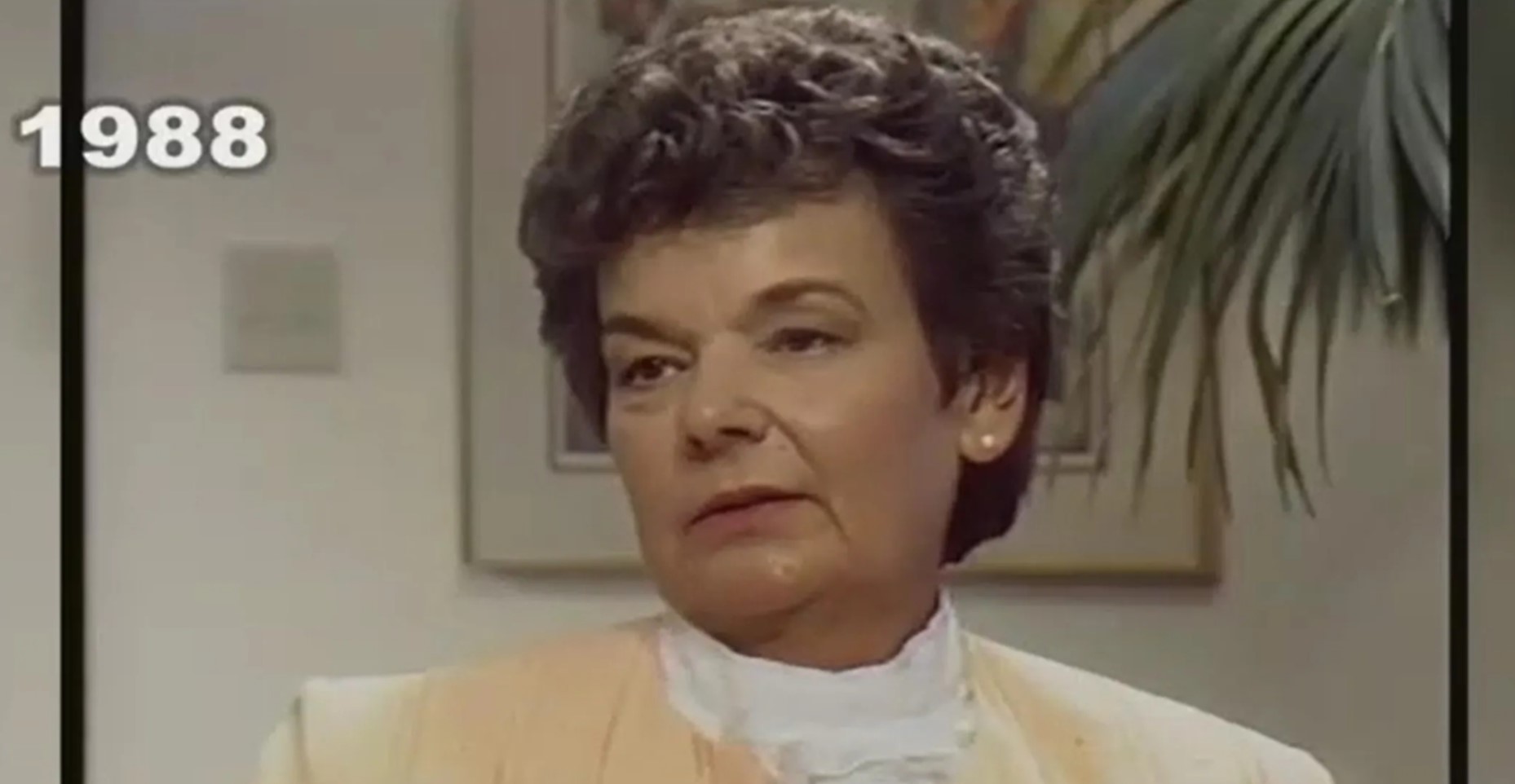Directed by Greg Beeman, ‘The Killer Inside: The Ruth Finley Story’ narrates the chilling tale of a city terrorized by a serial killer and a woman descending into panic and paranoia, believing she is his next target. Shortly after Ruth’s husband, Ed, suffers a heart attack and is hospitalized, she begins to receive unsettling messages and threats through letters and phone calls. Her city of Wichita, Kansas, is panicked by the recent killings attributed to the BTK killer, and Ruth is convinced that she is in his crosshairs. The Lifetime thriller kicks into gear when Ruth is kidnapped, leading the police on a desperate search, and when she mysteriously reappears, leaving them considering the possibility that the kidnapper is someone close to her.
The Killer Inside: The Ruth Finley True Story
The thrilling and twist-filled narrative of ‘The Killer Inside: The Ruth Finley Story’ is based on the bizarre real-life case of Ruth Finley, which occurred alongside the terrifying serial killings of the BTK killer in the late 1970s and ‘80s. As the city grappled with fear and uncertainty, Ruth found herself ensnared in a psychological thriller of her own, one that blurred the lines between reality and paranoia. Her ordeal began in the late 1970s when she started receiving a series of disturbing letters and phone calls. The messages were filled with poetic threats and unsettling content, signed by someone calling themselves “The Poet.”

Ruth was a seemingly simple 48-year-old woman who worked at a telephone company. Her husband was an accountant, and they had two sons who had grown up and moved out of their home. When Ruth reported the threats to the police, they could not figure out who would target them since the couple had no enemies. Ruth, already distressed by her husband Ed’s hospitalization, believed that she had become the next target of a potential killer. The letters and calls were meticulously crafted to induce fear, mentioning personal details about her life that only someone close to her might know.
The Kidnapping of Ruth Finley
The situation escalated on November 21, 1978, when Ruth was reported missing by her husband. This event threw the Wichita police into a frenzy, prompting an exhaustive search. When she reemerged a few hours later, Ruth claimed that two men had kidnapped her while she was shopping, and she was driven around for a few hours before escaping. She could not describe the assailants, but the police began to suspect that the Poet might actually be the BTK killer.

However, as the investigation unfolded, detectives were puzzled by the increasing intricacies of the case. The Poet’s communications were analyzed for clues as the police sent the letters to psycho-linguistics consultant Dr. Murray Miron. The expert noted that the writer was “severely psychotic, schizophrenic, wily, pathological, paranoid, and a loner with a deep feeling of persecution.” However, while similar to the BTK killer, the expert declared the Poet a different individual. This hypothesis was backed up by the fact that the BTK killer broke into his victims’ homes instead of kidnapping them and rarely left anyone alive.
Heightening Stakes and a Shocking Revelation
The turning point in the investigation came in the Summer of 1981 when the Poet began sending threatening letters to others, including Police Chief Richard LaMunyon’s wife. This made LaMunyon take over the investigation and bring home the extensive case files with 15 volumes. They detailed the increasingly aggressive harassment of Ruth Finley, which had escalated from threatening letters and calls to having their phone lines cut and jars of urine and feces delivered to their doorstep. Ruth had also reported being near-fatally stabbed thrice in a mall parking lot, leading to her hospitalization on August 31, 1979.

However, whenever the police had placed parts of their home under surveillance, the harassing objects were always left in unsupervised areas. The Poet seemed to know when the Finleys’ home was being watched and often sent his signature red bandana accompanying threats like a 12-inch knife and an unexploded Molotov cocktail. Such scenarios led LaMunyon to a startling revelation, and he ordered secret surveillance of the Finleys. Surveillance footage saw Ruth and Ed drive to a mailbox where Ruth posted five letters. These were retrieved by the investigators, and two of them were found to be from the Poet. When brought in for questioning, Ed was proven to be ignorant of the events, and Ruth confessed to tormenting and harming herself over the past few years.
The Manifestation of Deep-Seated Trauma
It was revealed that Ruth Finley was, in fact, the Poet, but the “why” was yet to be answered. While being questioned, she broke down crying and admitted that she needed help. “Yes, I wasn’t sure I was guilty, but I did know something was very wrong with me,” she told the detectives, as reported on The True Crime Database. “I wish I were dead, I guess I am just crazy.” Despite the heavy cost of $370,000 borne by the police department while chasing the hoax for over three years, Ruth was not charged on the condition that she avail psychiatric help at the St. Joseph Medical Centre.

Under Dr. Pickens, Ruth began to reveal her history of abuse and the emergence of the persona of the Poet. She had suffered from sexual abuse at the hands of a family friend and neighbor at the age of three. While her farmer father did not suspect the neighbor to be capable of such a thing, the man would use a red bandana to gag her while sexually assaulting her and threaten her to keep quiet. She claims to have been assaulted again in Fort Scott, Kansas, at the age of sixteen, when an assailant dubbed the “Sex Maniac” branded her with a hot iron on both thighs. She would deal with the trauma of these events by writing poems in a secret book and detaching herself from the harrowing experiences.

The emergence of the BTK killer and her husband’s hospitalization are speculated to have acted as catalysts for Ruth’s defense mechanism, which led to the emergence of the Poet as a means of channeling her repressed emotions and experiences. With 5 years of treatment, she was able to be at peace with her past and was accepted and supported by her community, including co-workers and family. Later, Ruth opened up about her ordeals and the case on national television. She passed away on May 30, 2019, in Wichita, Kansas. The Lifetime movie, written by Katie Gruel, bases itself on this real-life case of misdirection and trauma and largely adheres to the essence of Ruth Finley’s real story.
Read More: Lifetime’s Yoga Teacher Killer: Kaitlin Armstrong’s True Story, Explained


You must be logged in to post a comment.